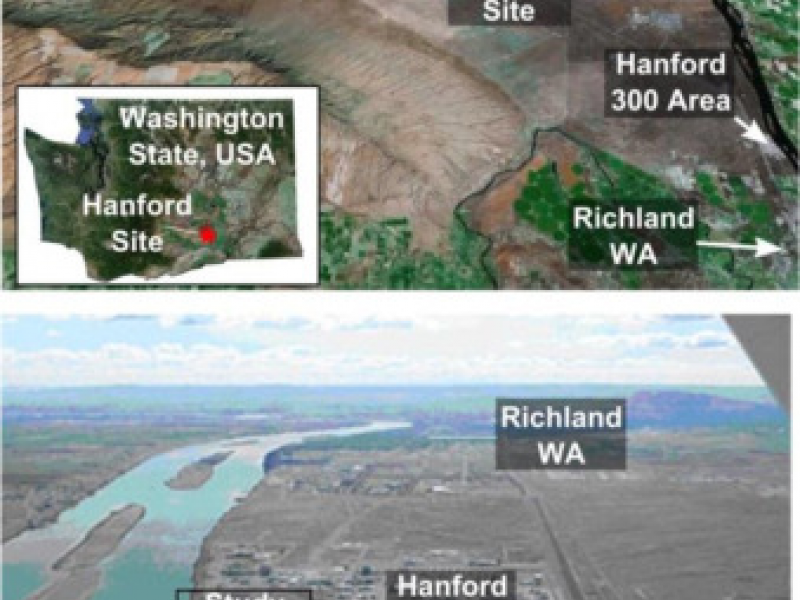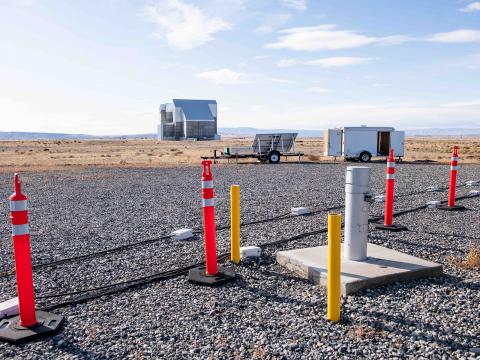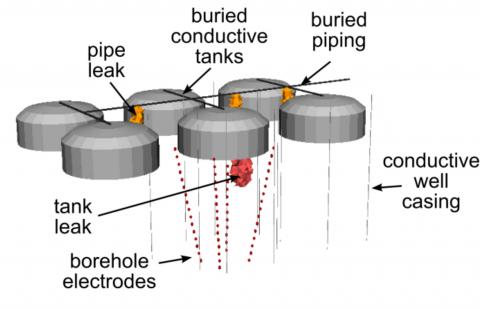
E4D Highlights
see our Publications & Reports
Technical Details

- Scalable design for execution on laptops and supercomputers
- Laboratory and field installations
- Coupling with flow and transport models (e.g., PFLOTRAN, eSTOMP)
- Cost efficiency associated with pre-field planning
- Physically-based field-scale feasibility assessments
- Solutions for:
- Mesh generation (problem definition/boundaries)
- Forward modeling (feasibility and synthetic studies)
- Inverse modeling (static characterization)
- Time-lapse inverse modeling (monitoring)
What makes E4D unique?

- Computational efficiency
- Customization
- Incorporation of prior information
- Perched-water and/or water table locations
- Metallic infrastructure locations
- Hydrostratigraphic boundaries
- Conductivity parameter bounds
How does E4D execute?
Reading user-created ascii text files customized for an operational run mode and site-specific description, E4D executes with a master-slave configuration, where the master process communicates with slave processes for parallel execution. This distributes the computational burden to slave nodes, allowing for near real-time interpretation of large geophysical datasets.

Field examples include:
- Characterization of hazardous nuclear wastes beneath underground tanks. The largest static ERT inversion to date with ~5,000 electrodes, 220,000 measurements, and 3 million inversion parameters.
- River-stage intrusion and paleochannel detection. Surveys were executed with 352 surface electrodes, collecting 139,000 measurements every 6 hours. A time-lapse inversion of ~905,000 inversion parameters executed within 2 hours on 353 cores.
- Tank leak detection. With 4 lines of 16 buried electrodes surrounding a tank, 5000 time-lapse measurements were inverted with ~950,000 parameters within 3 hours using 65 cores.
Publications & Reports
JULY 5, 2020
Journal Article
Integrated hydrogeophysical modelling and data assimilation for geoelectrical leak detection
MARCH 1, 2019
Conference Paper
EGS Collab Project Electrical Resistivity Tomography Characterization and Monitoring
APRIL 2, 2018
Conference Paper
3D Time-Lapse Geophysical Imaging Evaluation of Contaminant Migration at the Hanford BY Cribs Site
FEBRUARY 1, 2017
Journal Article
PFLOTRAN-E4D: A parallel open source PFLOTRAN module for simulating time-lapse electrical resistivity data
DECEMBER 11, 2009
Journal Article
Three-dimensional electrical resistivity model of a nuclear waste disposal site
Contacts
Computational Geophysics Team Leader; Advisor, RemPlex